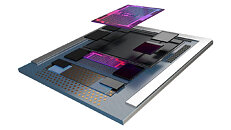MediaTek Announces Commitment to Open New Semiconductor Design Center at Purdue University in Indiana
Today, leading global fabless chipmaker MediaTek Inc., [joined by Indiana Governor Eric J. Holcomb, Deputy Secretary of Commerce Don Graves, Indiana Secretary of Commerce Bradley B. Chambers, and Purdue College of Engineering's Dr. Mung Chiang] announced their commitment to accept a state transition assistance package from the Indiana Economic Development Commission (IEDC) to support its very first Midwest semiconductor chip design center in West Lafayette, Indiana. MediaTek also shared its intention to create a new research partnership with Purdue to collaborate on engineering talent development and new research on next-generation computing and communications chip design. The news was shared with senior leaders, other international investors and policymakers assembled in National Harbor, Maryland for the 2022 SelectUSA Investment Summit.
This novel partnership in Indiana represents a new U.S. growth model for MediaTek USA; outside the traditional centers of gravity for chip design. "We believe strongly that being in Indiana means we'll have access to some of the best engineering talent in the world," said Dr. Kou-Hung Lawrence Loh, Corporate Senior Vice President of MediaTek Inc. and President of MediaTek USA, Inc. "Not just at Purdue, but West Lafayette is only four hours away from nearly a dozen of the top engineering schools in the country. In the post pandemic world, top candidates tell us they want to be closer to home, near family and they want to have a real house and great schools. Indiana offers all that and more."
This novel partnership in Indiana represents a new U.S. growth model for MediaTek USA; outside the traditional centers of gravity for chip design. "We believe strongly that being in Indiana means we'll have access to some of the best engineering talent in the world," said Dr. Kou-Hung Lawrence Loh, Corporate Senior Vice President of MediaTek Inc. and President of MediaTek USA, Inc. "Not just at Purdue, but West Lafayette is only four hours away from nearly a dozen of the top engineering schools in the country. In the post pandemic world, top candidates tell us they want to be closer to home, near family and they want to have a real house and great schools. Indiana offers all that and more."



































